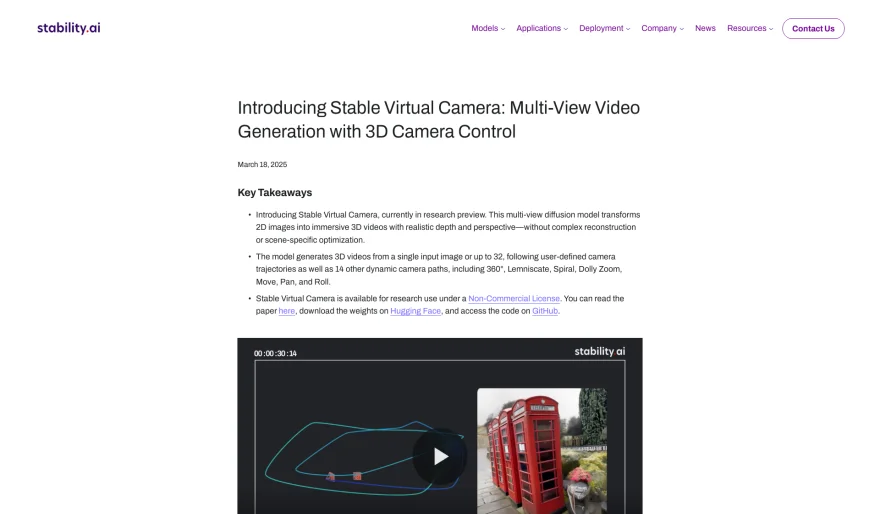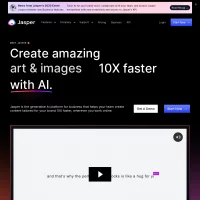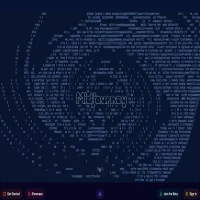Stay Ahead of the Curve
Latest AI news, expert analysis, bold opinions, and key trends — delivered to your inbox.
Stability AI Unveils Stable Virtual Camera: Transforming 2D Images into Immersive 3D Videos
3 min read Stability AI just launched Stable Virtual Camera, turning 2D images into immersive 3D videos with dynamic camera movements and 3D consistency for up to 1,000 frames. Available for research on Hugging Face and GitHub. A game-changer for creative tech! March 19, 2025 17:58
On March 18, 2025, Stability AI launched Stable Virtual Camera,
a groundbreaking multi-view diffusion model that turns 2D images into
immersive 3D videos with realistic depth and perspective. Released as a
research preview, this tool eliminates the need for complex
reconstruction or scene-specific optimization, making 3D video
generation more accessible than ever. Here’s what you need to know:
Key Features
Dynamic Camera Control: Create videos with custom camera movements like pans, zooms, spirals, and more. Preset paths include 360°, Dolly Zoom, and Spiral.
Flexible Inputs: Works with a single image or up to 32 inputs for enhanced detail and accuracy.
Aspect Ratio Versatility: Generates videos in square (1:1), portrait (9:16), landscape (16:9), and custom ratios without additional training.
Long Video Generation: Maintains 3D consistency for up to 1,000 frames, enabling smooth loops and transitions.
How It Works
Stable Virtual Camera uses a two-pass sampling process:
Anchor Views: Generates initial reference frames.
Target Views: Renders the final video in chunks for consistent results.
This approach ensures high-quality outputs, outperforming competitors like ViewCrafter and CAT3D in novel view synthesis (NVS) benchmarks, particularly in large-viewpoint generation and temporal smoothness.
Availability and Limitations
Access: The model is available under a non-commercial license for research purposes. You can find the weights on Hugging Face, the code on GitHub, and the research paper on Stability AI’s website.
Limitations: Inputs with humans, animals, or dynamic textures (e.g., water) may produce lower-quality results. Complex or ambiguous scenes can lead to flickering artifacts, especially with significant viewpoint changes.
Why This Matters
Stable Virtual Camera marks another step in Stability AI’s push into generative AI innovation, following the release of Stable Diffusion 3.5 in October 2024. Despite past financial and leadership challenges, the company continues to deliver cutting-edge tools that push the boundaries of creative technology.



















 AI Agents
AI Agents